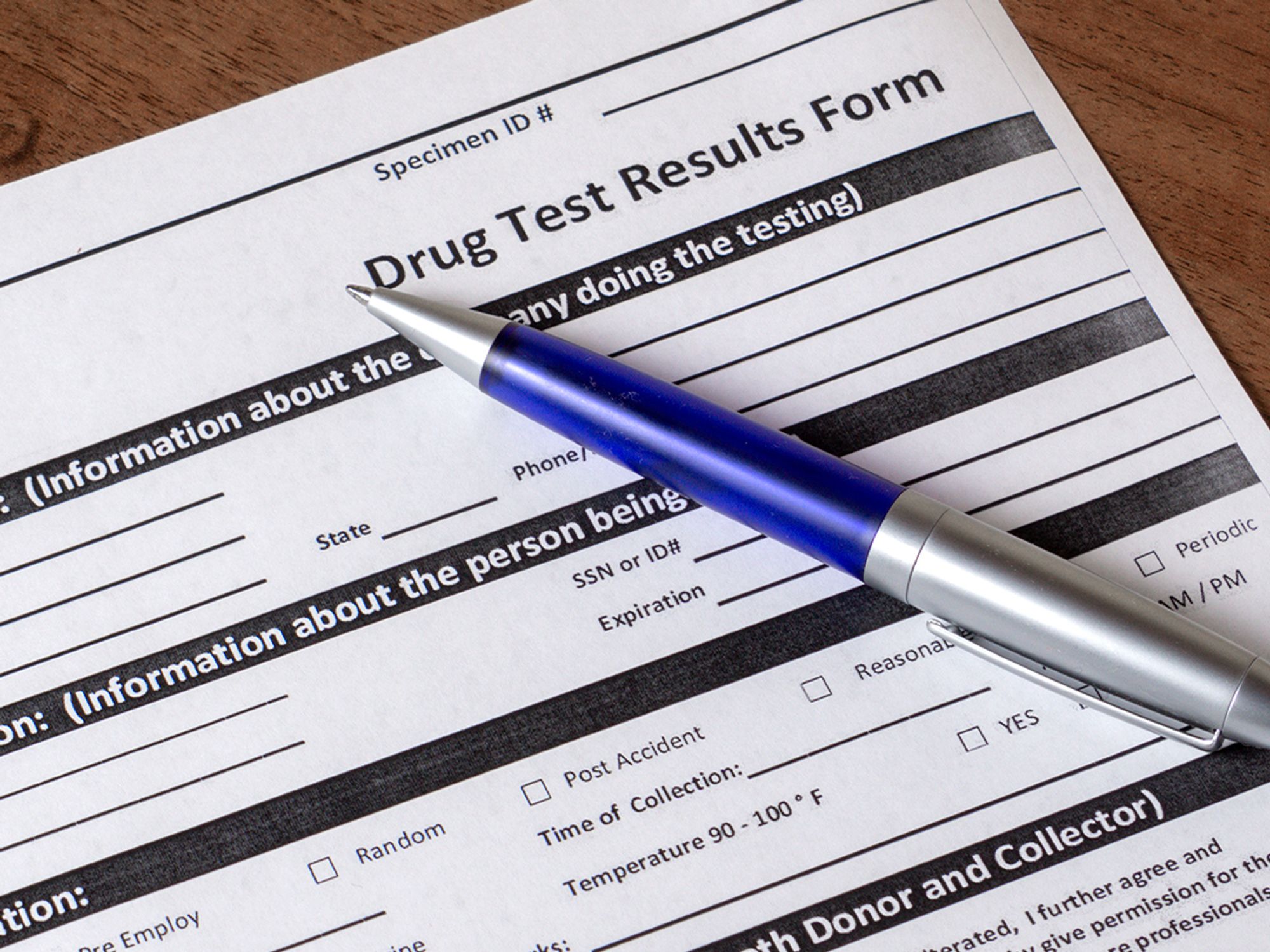Next steps

- Follow company policy if a drug test is positive.
- The consequences of a positive test may depend on state law.
- Allow the employee to return to work if the test is negative. Paying for time missed due to a suspension is good company policy.
After a drug test is conducted, it may take a few days for the results to be received. If a test was conducted because of reasonable suspicion of substance abuse, the employee should not return to work after taking the test. The employee can be taken home or sent home in a cab after the test is completed. The employee can be placed on suspension or paid leave until the results are returned.
After drug test results are received, an employer’s next steps are based on whether the test is positive or negative.
Negative result: If the drug test is negative, the employee can return to work. The company should pay for time missed because of the suspension; this is not required by law, but would be a good practice and show of good faith.
If the test was taken by an applicant whose job offer was contingent on passing a drug screen, the company may continue with the hiring or onboarding process.
Positive result: If a test is positive, employers can act under company policy. The consequences of a positive test could include completion of a rehabilitation program before returning to work, suspension, or termination.
If the test was given to a job candidate, a positive test could be a reason not to hire the candidate.
A state law may require an employer to provide the option for rehabilitation if a test is positive. A state law may also require an employer to consider accommodations for medical marijuana use. If you have a union contract, consult the contract for any additional steps that need to be taken.
Legally prescribed medication
If a drug test comes up as positive due to an applicant or employee taking a legally prescribed medication, the drug test result is not positive for illegal drugs. In addition, if a prescription drug does show up on a drug test result, the information needs to be kept confidential under the ADA.
A medical review officer will typically investigate a positive test result to see if was caused by legally prescribed medication and will not report the result as positive if the medication is being taken as prescribed.
If a company does not used a medical review officer to investigate positive test results, a company can ask the job applicant or employee about lawful drug use as a possible explanation for the positive result.
If the positive result was due to legal use of a prescribed medication, employers should not take a negative employment action based on the result of the test.
If an employer learns that an applicant or employee is taking a legally prescribed medication and use of the drug is a concern, an employer can consider whether an accommodation can be provided. Options might include a flexible schedule, a job transfer, or leave. Under ADA guidelines, a company would not be able to reject a job candidate because it thinks or suspects that a certain condition or medication could cause problems in the future.
Reasonable accommodations
If employers are considering not hiring an individual because of a medical condition (which may involve a medication), the company must take additional steps to show that the candidate is not being discriminated against based on a disability.
This means that employers must be able to show that the candidate is unable to perform the job’s essential functions because of a medical condition, or that the candidate will pose a direct threat because of a medical condition. Employers must also show that no reasonable accommodation was available that would enable the individual to perform the essential job functions, or that accommodation would impose an undue hardship.
To validate that the candidate can be legitimately disqualified because of a direct threat, a company needs to be able to show:
- There is significant risk of substantial harm;
- The specific risk is identified;
- It is a current risk, not one that is speculative or remote;
- The risk assessment was based on objective medical or other factual evidence regarding the individual; and
- If a genuine significant risk of substantial harm exists, the employer has considered whether the risk can be eliminated or reduced below the level of a direct threat by reasonable accommodation.
These steps should not be taken lightly. A decision to not hire an applicant because of a medical condition, or legally prescribed drug, must be given careful consideration.
